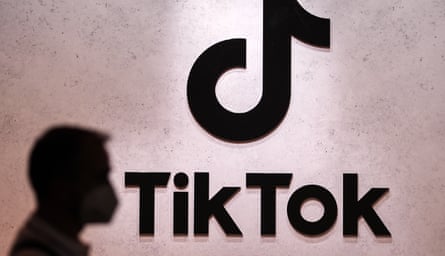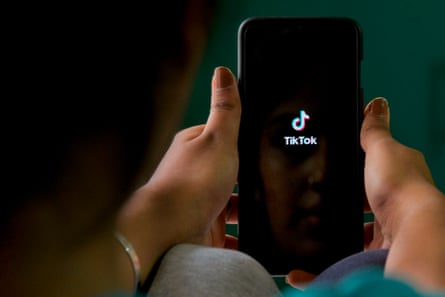
It is, quite literally, the trillion dollar question: how did TikTok go from a niche social network for lip-syncing teens to the most popular app in the western world, threatening to knock Facebook off its perch entirely, in just a few short years?
There are no end of possible answers, and TikTok owes its phenomenal success to a host of canny choices: easy-to-use video creation tools blurred the line between creator and consumer far more than YouTube had ever managed; a vast library of licensed music allowed teens to soundtrack their clips without fear of copyright strikes; a billion-dollar advertising campaign across Facebook and Instagram bought new users as quickly as Zuckerberg’s company would send them over.
But the most powerful tool TikTok has to grab users and keep them hooked is the company’s feted “For You Page”, the FYP, and the algorithm that populates it.
The FYP is the default screen new users see when opening the app. Even if you don’t follow a single other account, you’ll find it immediately populated with a never-ending stream of short clips culled from what’s popular across the service. That decision already gave the company a leg-up compared to the competition: a Facebook or Twitter account with no friends or followers is a lonely, barren place, but TikTok is engaging from day one.
It’s what happens next that is the company’s secret sauce, though. As you scroll through the FYP, the makeup of videos you’re presented with slowly begins to change, until, the app’s regular users say, it becomes almost uncannily good at predicting what videos from around the site are going to pique your interest.
The company is disarmingly open about how that algorithm works – at least, on the surface. “Recommendations are based on a number of factors,” it said in 2020, “including things like user interactions such as the videos you like or share, accounts you follow, comments you post, and content you create; video information, which might include details like captions, sounds, and hashtags; [and] device and account settings like your language preference, country setting, and device type.”
But how those various inputs are weighted, and what precise factors lead any particular video to end up on your feed, is opaque, says Chris Stokel-Walker, author of TikTok Boom. “One person at TikTok in charge of trying to track what goes viral and why told me in my book that ‘There’s no recipe for it, there’s no magic formula.’ The employee even admitted that ‘It’s a question I don’t think even the algo team have the answer to. It’s just so sophisticated.’”
One crucial innovation is that, unlike older recommendation algorithms, TikTok doesn’t just wait for the user to indicate that they like a video with a thumbs up, or satisfy itself by judging what a user chooses to view. Instead, it appears to actively test its own predictions, experimenting by showing videos that it thinks might be enjoyable and gauging the response. “It pushes the boundaries of your interests and monitors how you engage with those new videos it seeds in your For You Page,” Stokel-Walker says. “If it thinks you like videos about Formula One, it might show you some videos about supercars.”

That experimentation doesn’t just allow the service to rapidly discern the contours of an individual viewer’s interests, it’s also an important part of what the site offers creators, says Sascha Morgan-Evans, head of the TikTok studio at creative agency OK COOL. “Every video posted on TikTok gets served to at least one person on the For You page. We’ve figured out, based on how views accumulate, that TikTok serves each individual video to batches of people. The number of users in these batches increases with each successful round, one where a majority of users within a batch had a high number of positive interactions with the video.”
That means that every user has the chance of global fame. Even if you have no followers at all, your video will eventually make it on to someone’s For You Page, and if they are deemed to have engaged positively, you can reach thousands or millions of viewers extremely quickly. And the speed of the videos helps TikTok hone its data rapidly: “Think about how many videos you watch in an hour on YouTube,” Stokel-Walker says, “and the data that generates about you – versus how many you can watch on TikTok.”
The FYP isn’t magic, though, and the ways it fails can be just as instructive as the ways it succeeds. New users of the app will notice that it is obsessive about harvesting personal data, begging for access to the contacts list and tracking every inbound and outbound shared video. Deny it those datapoints, and it is forced to present the most generic possible version of the feed, personalised to what little it can determine from broad geolocation and device details.
But when it works, the algorithm is so good at what it sets out to do that TikTok appears almost overwhelmed by its power, Stokel-Walker says. “It’s even slipped in messages to users it thinks are too addicted, saying they should put the phone down.”.
One such message, shown from the company’s TikTokTips account to users scrolling through their feed for hours straight late at night, features TikTok star Gabe Erwin imploring the viewer to “Go get some extra sleep, turn your phone off, do yourself that favour and have a great night”. The company has also added new “screen time” features, particularly for younger users, turning off notifications past bedtime and allowing users to set a maximum time on the app each day, in an effort to limit the most compulsive use of its app.

As TikTok moves into its second year of online dominance – the app overtook YouTube for average time per user in September 2021 and has stayed at the top ever since – the big question is whether its algorithmic success can remain a unique selling point. Facebook certainly hopes not: the social network, along with corporate sibling Instagram, recently announced an overhaul of its apps to focus on an aggressive new algorithmic curation engine. Just like TikTok, Facebook and Instagram will now show you vast quantities of content from users you don’t follow, with posts from friends buried in between, or hidden on a separate “following” feed behind a tab.
The change was poorly received, leading to an apology video from Instagram boss Adam Mosseri, who said the company would be dialing back some of the alterations – but that ultimately, this was the future. “We’re going to try and get better at recommendations,” he said, “because we think it’s one of the best ways to help creators reach a new audience and grow their following.”
If there is a threat to TikTok’s algorithmic crown, it might be from the company itself. The app dominates user attention, but has historically been lightly monetised. As a privately held company, TikTok doesn’t publish revenue figures but in 2021, research firm eMarketer estimates it took in $4bn a year – less than 5% of Facebook’s revenue.
In 2022, the company has tried to grow that. It’s taken the traditional approach, with more adverts injected into the feed, but also tried more novel opportunities, including a push for QVC-style live shopping experiences, lifted from Chinese sister app Douyin. The launch went poorly. Hosts and brands had to be subsidised by TikTok, which pushed deep discounts in sales but failed to garner a regular returning audience.
Worse, sales with too-good-to-be-true prices were undercut by other items whose prices really were too good to be true: the platform struggled with a counterfeiting problem, leaving users unclear if a Dyson hairdryer worth £450 is selling for £14 because of a subsidy or a scam.
But if TikTok can work out how to balance the commercially-necessary tweaks to its algorithm with the pure compulsion of the FYP at its best (or worst), then it will have created an artefact of tech history that will go down alongside the News Feed, Infinite Scroll and (Snapchat) Story as emblematic of the social media era.



